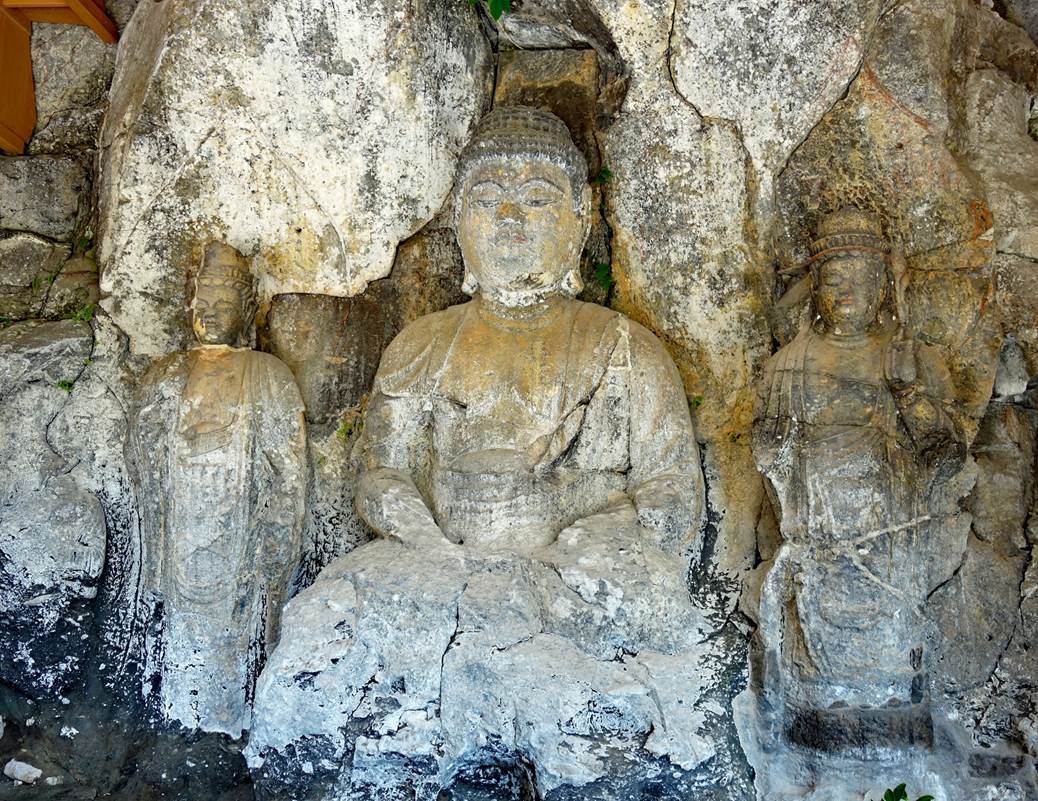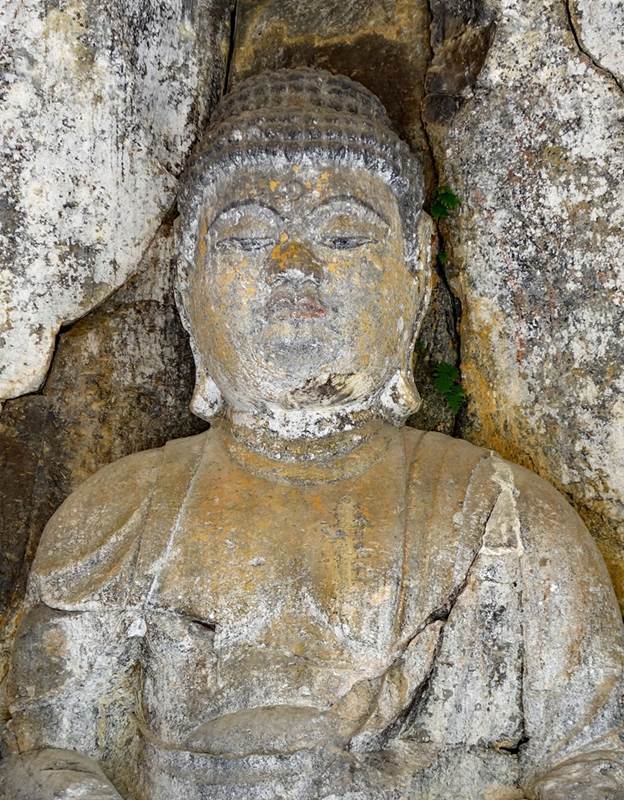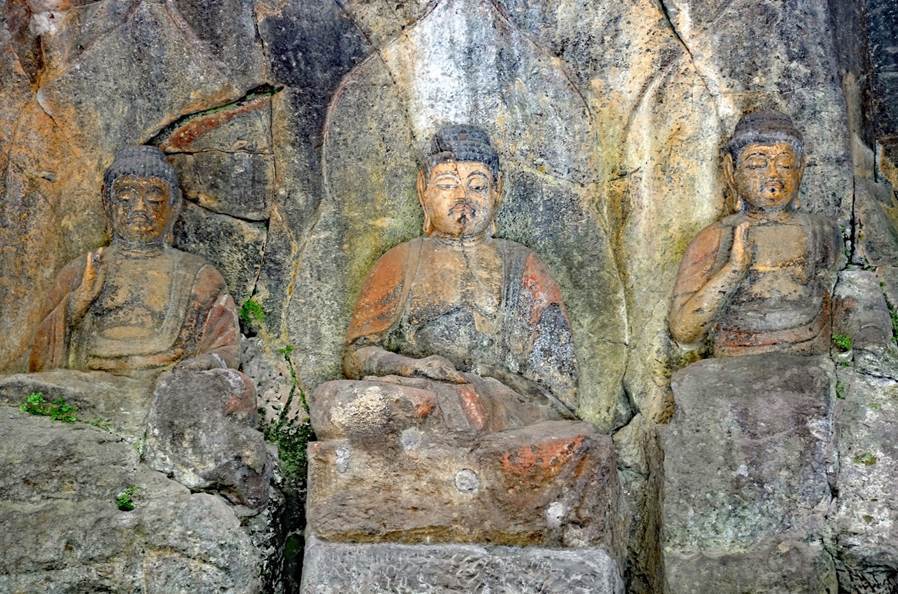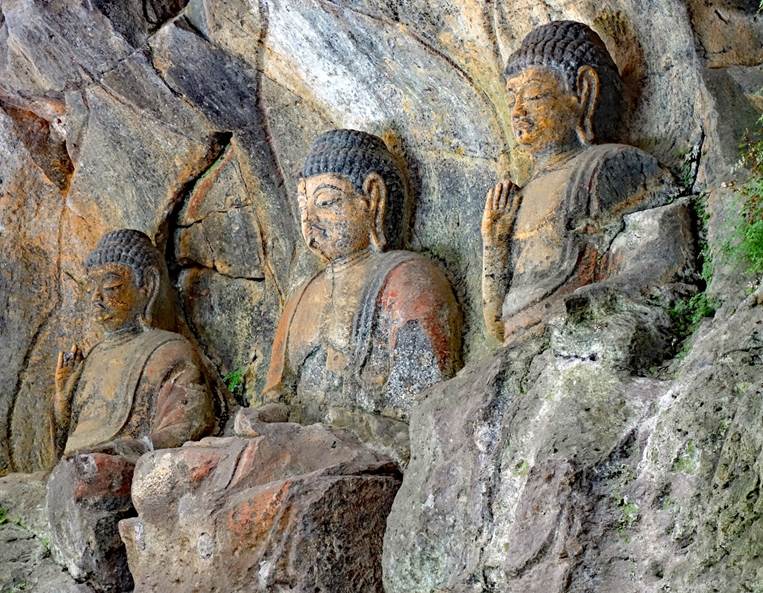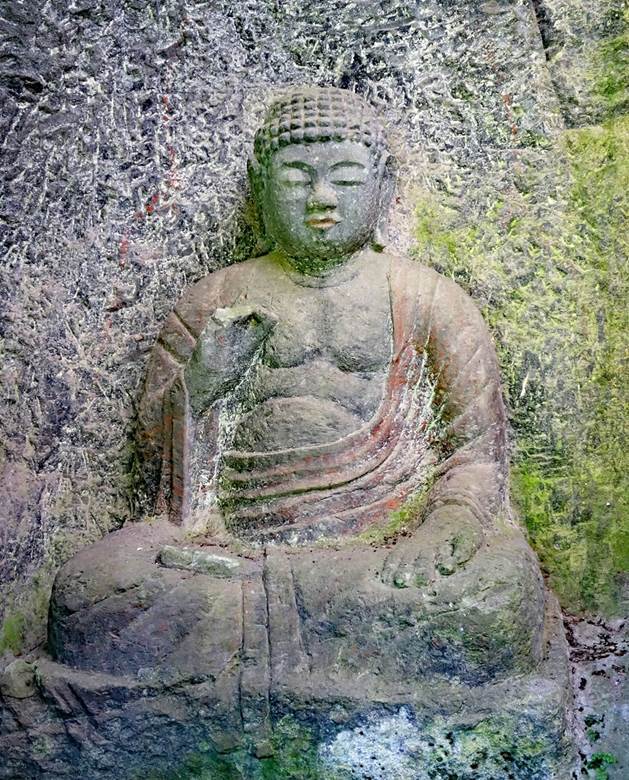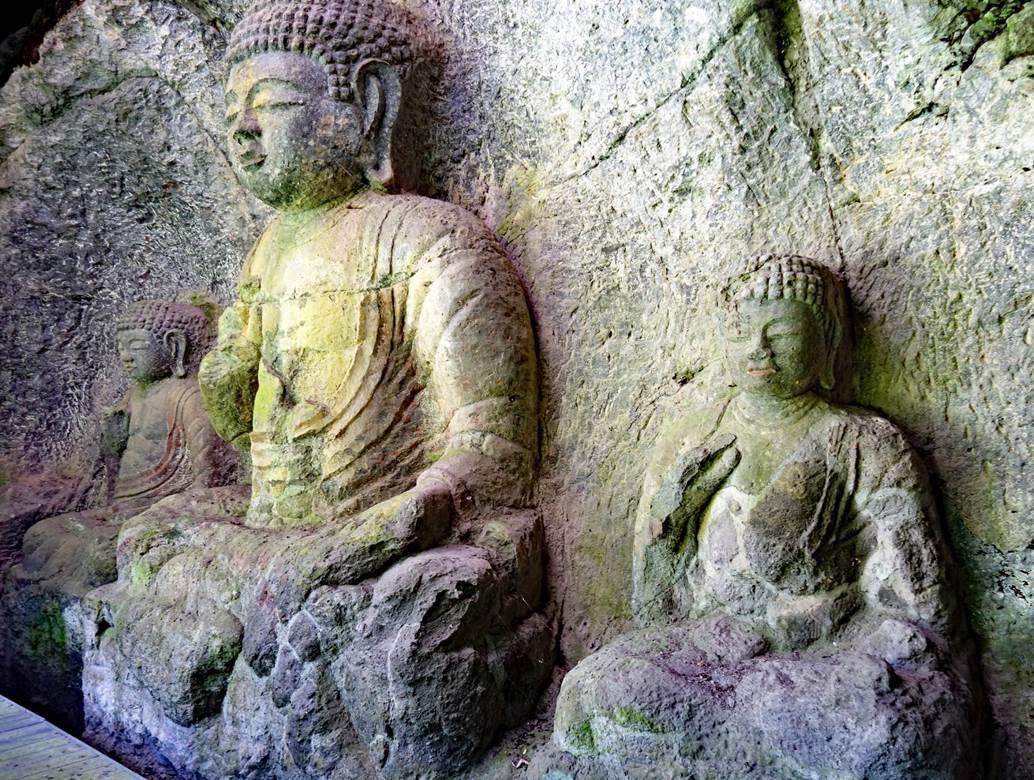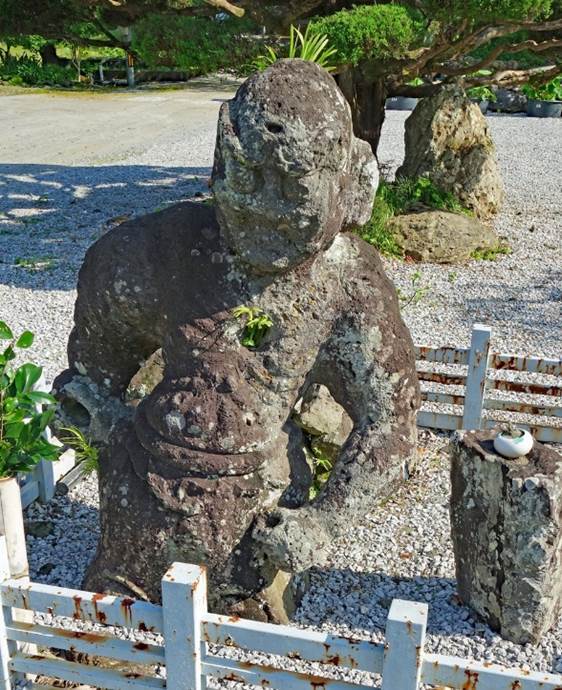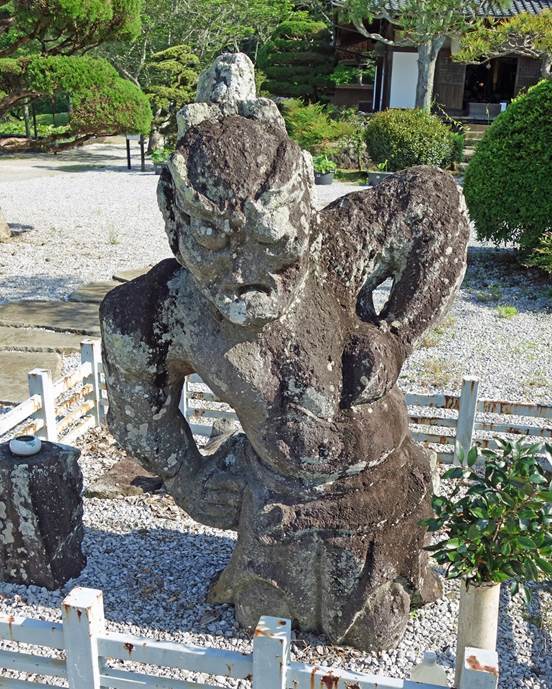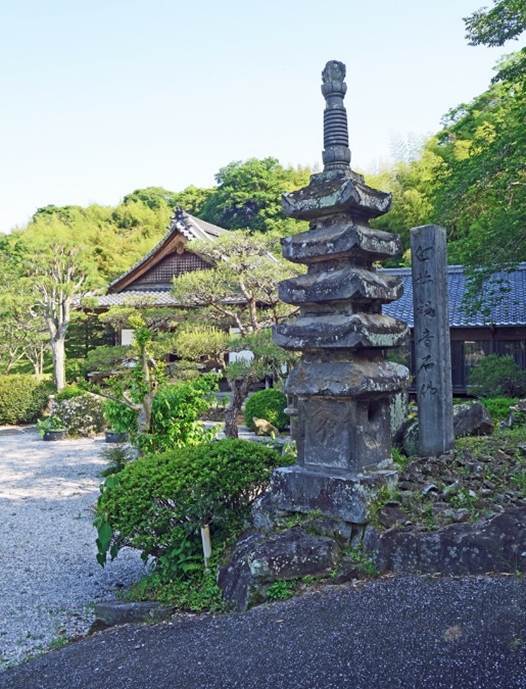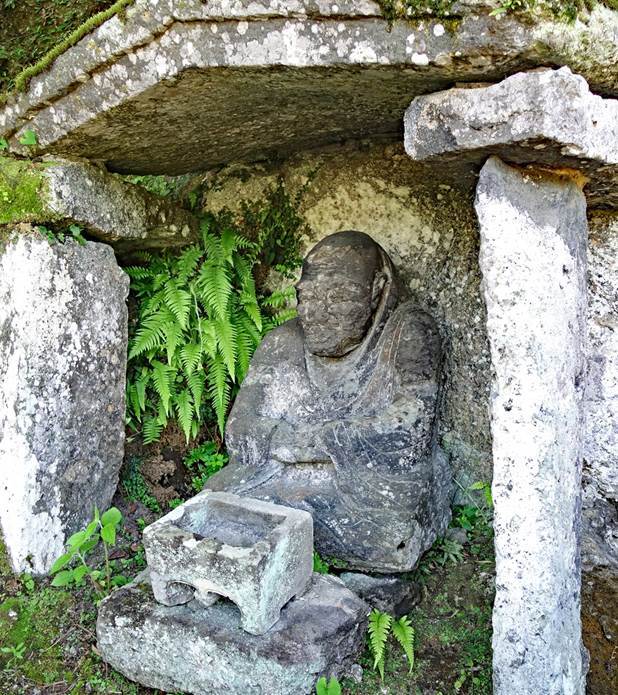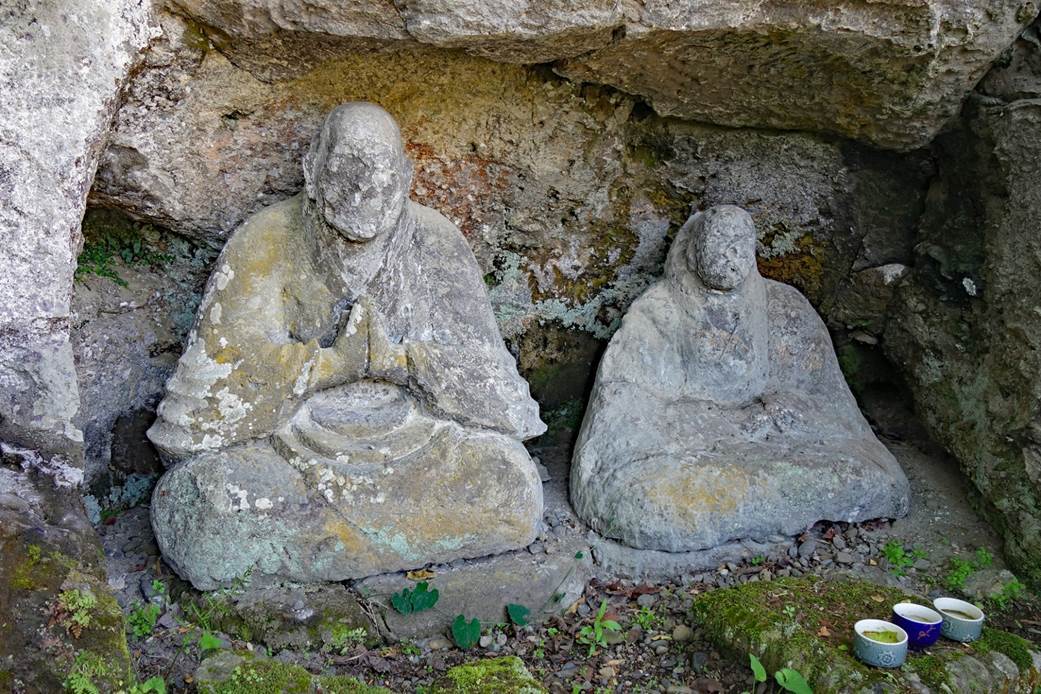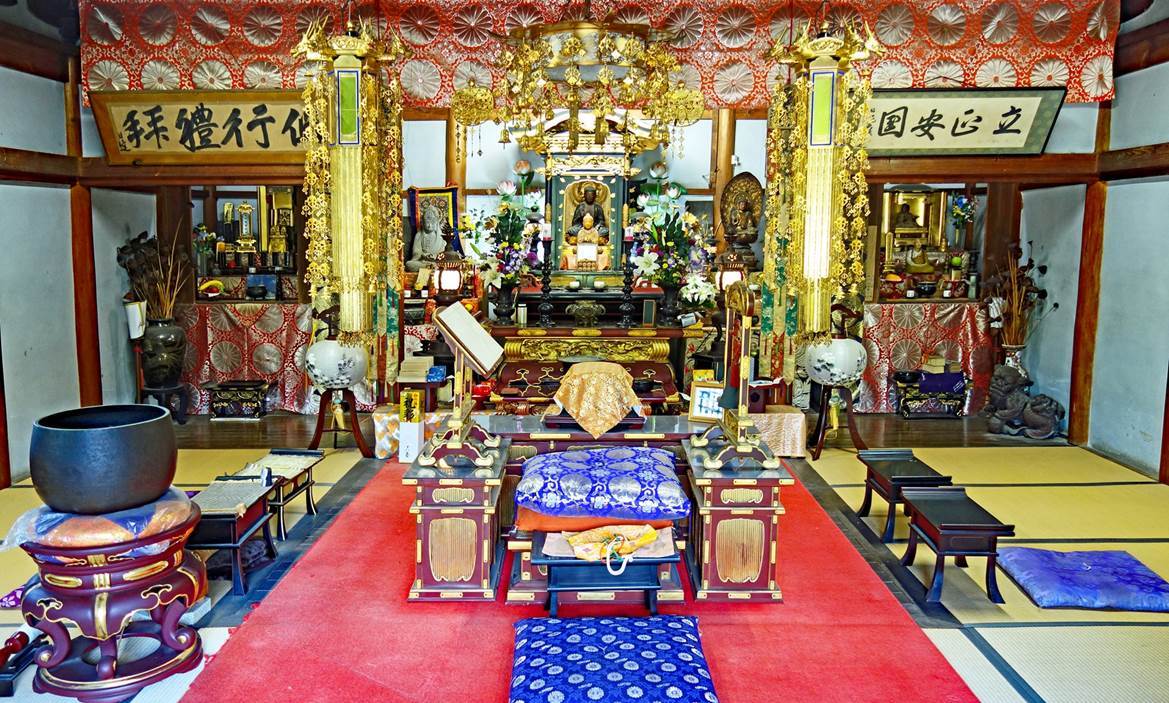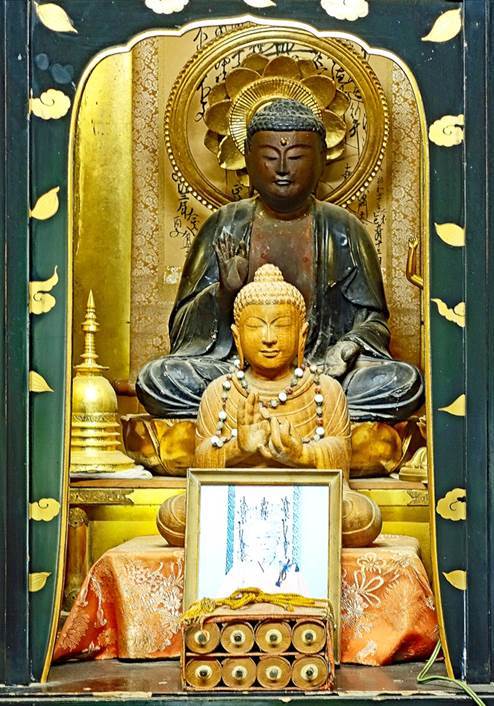Usuki, Kyushu, Japan (May 2024)
![]()
Back to main Japan May 2024 page
Usuki (town)
The small
coastal town of Usuki, located some 18km southeast of Oita City, is a former
castle town that became a prosperous trading city during the Edo period. Today,
nothing much remains of its former castle, but a substantial portion of its
pretty historical Edo-period district has been retained.
Wall of the
former castle.

Sanmon (gate) and shoro (bell tower) of Tafuku-ji. This Buddhist temple
of the Rinzai sect was founded in 1601 and moved to its current location on a
small hill in 1631. The shoro (second photo below) was built in 1814.


Sanmon of Hoon-ji, seen from the temple's inner courtyard. This temple
was founded in 1602 as the family temple of the lord of the Usuki castle. It
belongs to the Nichiren sect.

Nioza Road, a narrow street bordered by traditional houses.

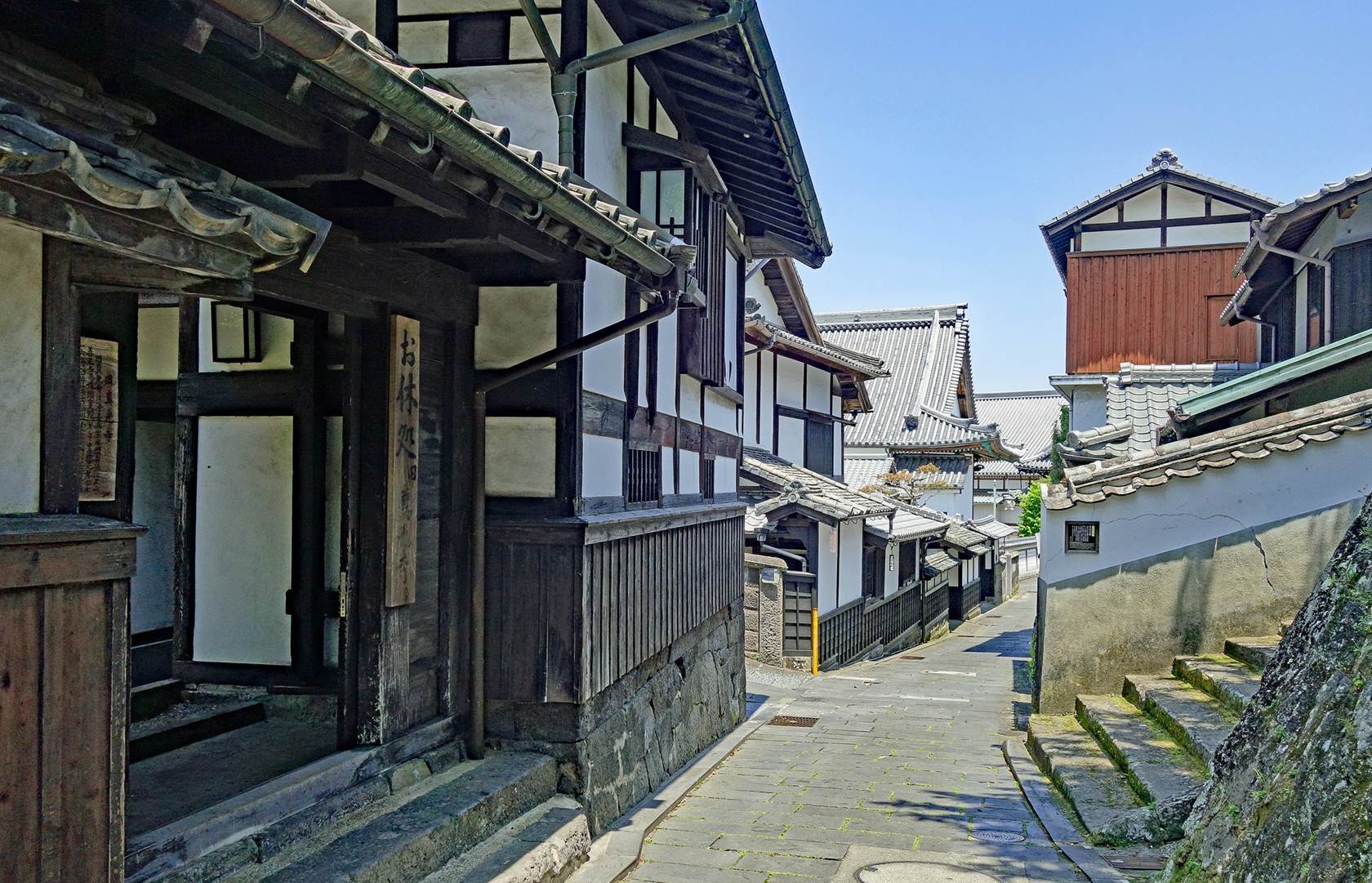
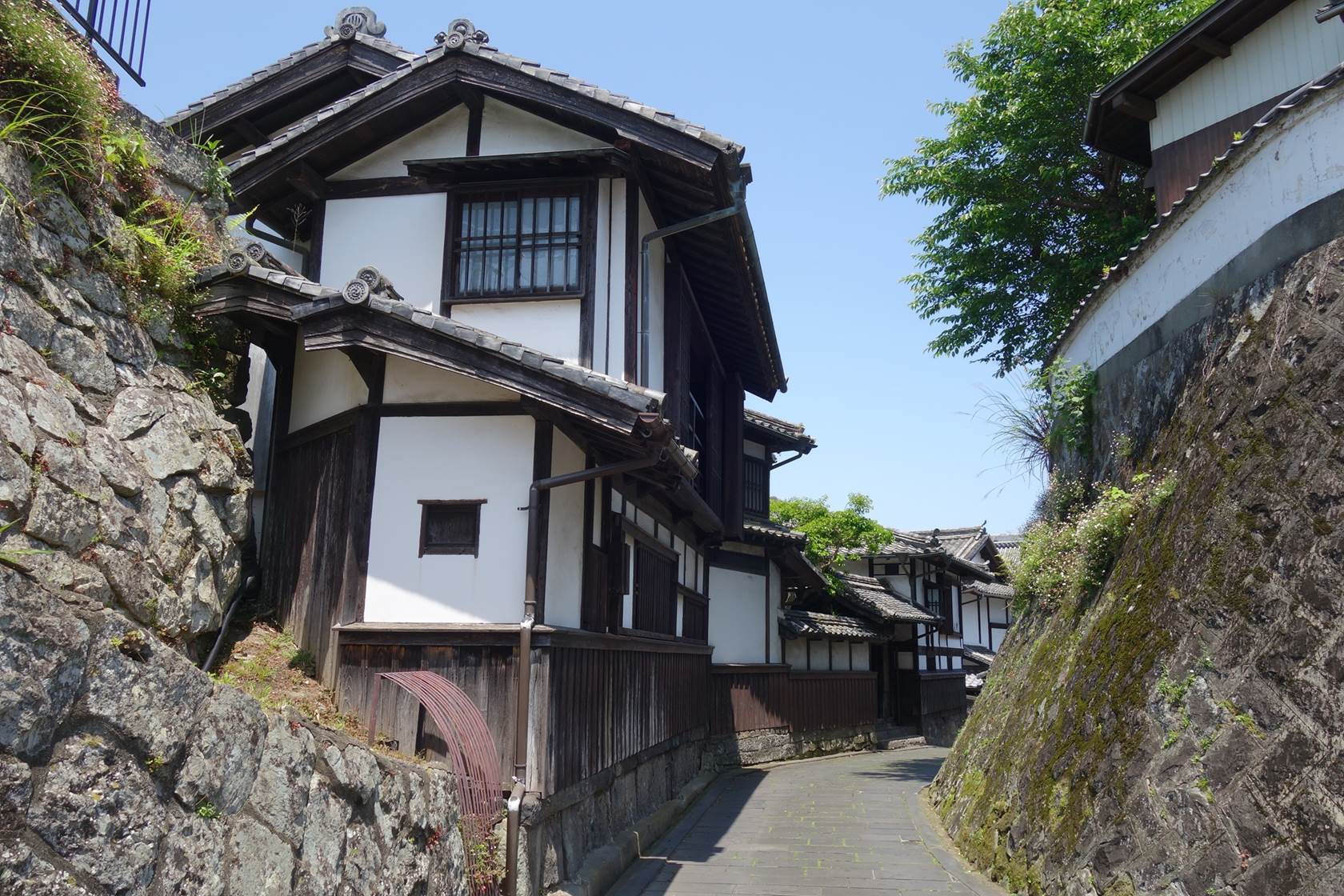
Old fashioned store fronts.
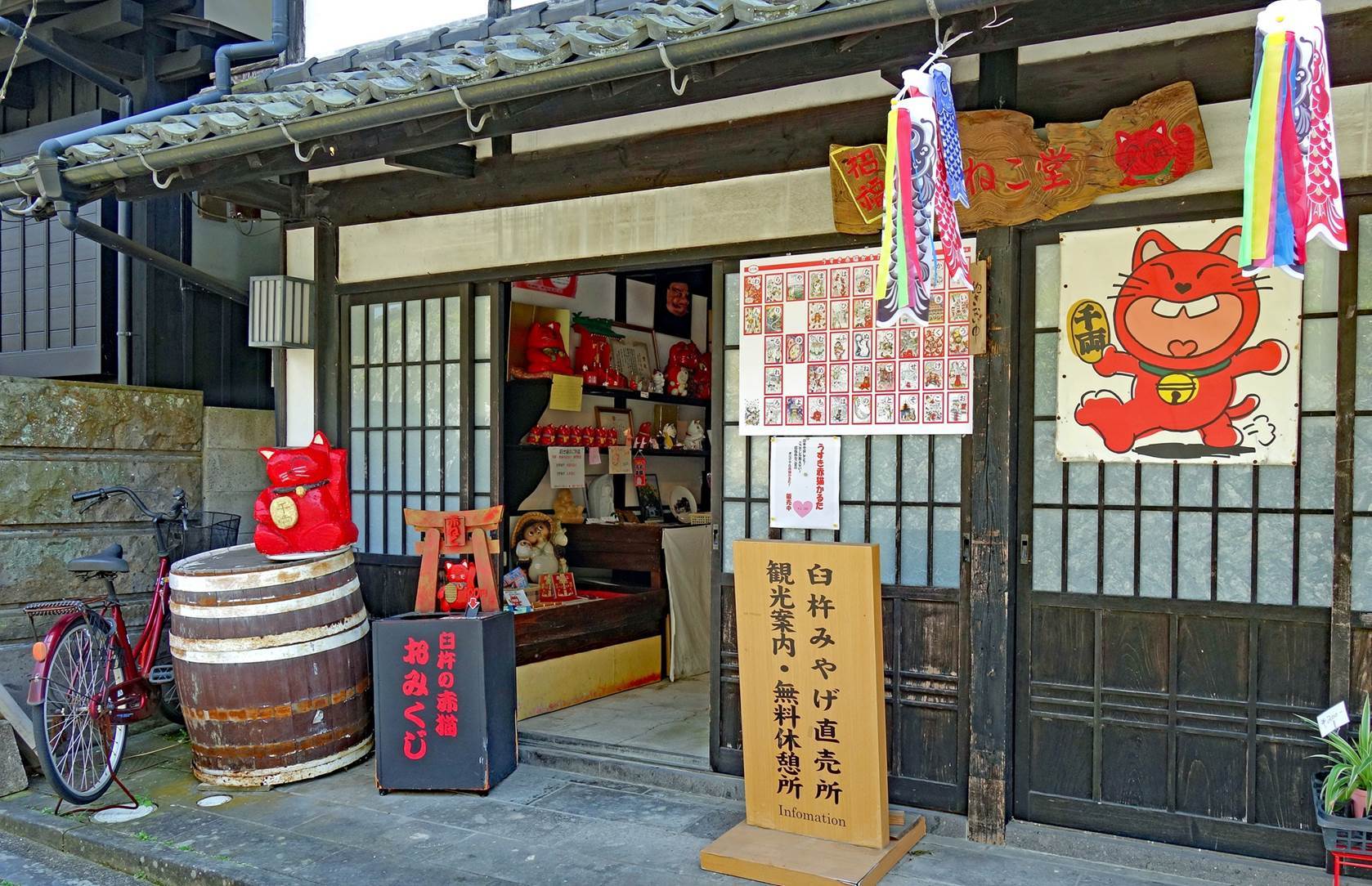
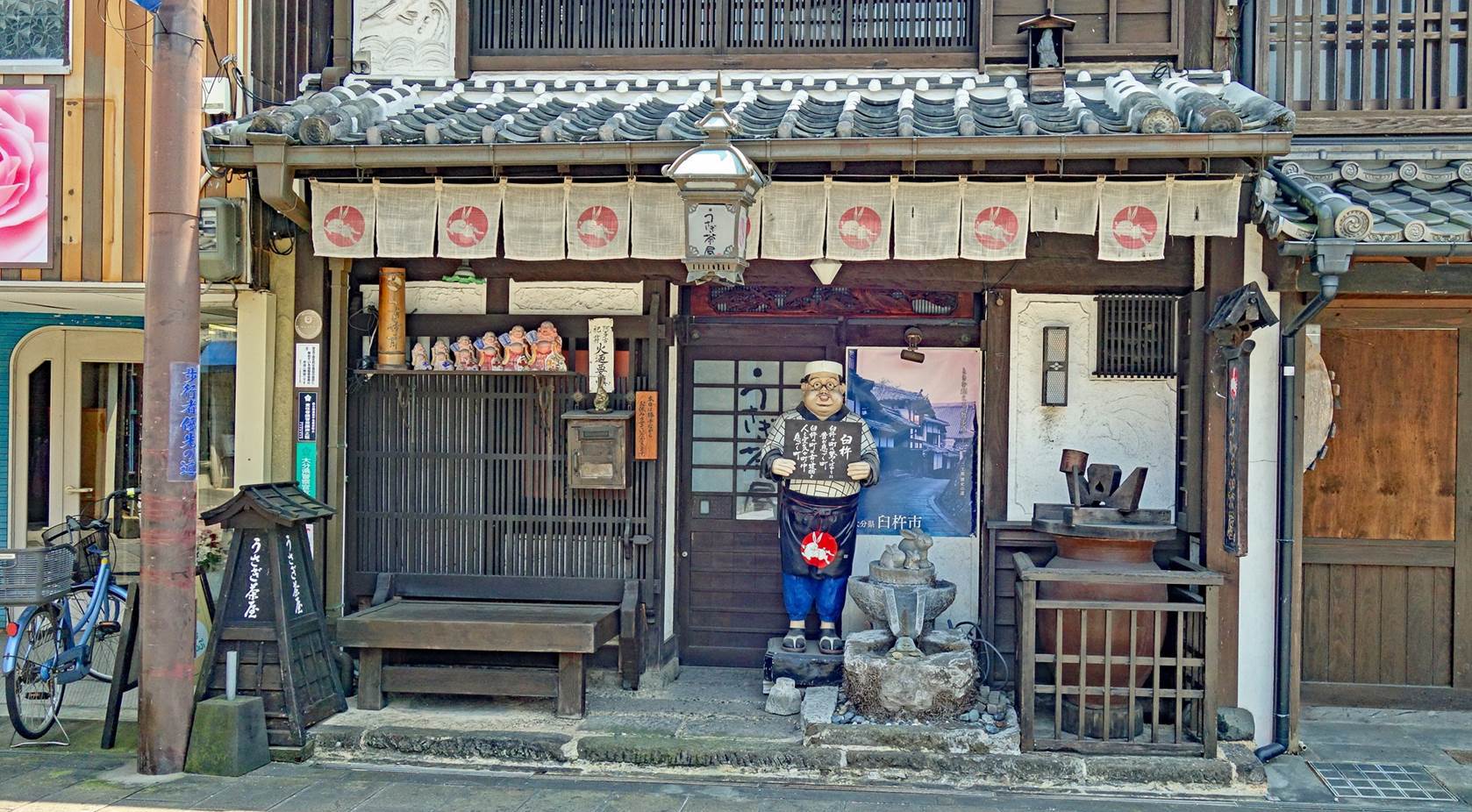
Usuki (Stone Buddhas)
Located about
7km west of Usuki station, on the western slope of a small valley, this site
contains an exceptional collection of stone sculptures forming four distinct
clusters. Most of these sculptures were carved during the late Heian period
(794-1185). A few were created during the Kamakura (1185-1333) period. It is
the largest such site in Japan. Many of the sculptures are remarkably well
preserved.
- Hoki 2nd
cluster, sculpted during the late Heian period.
|
|
|
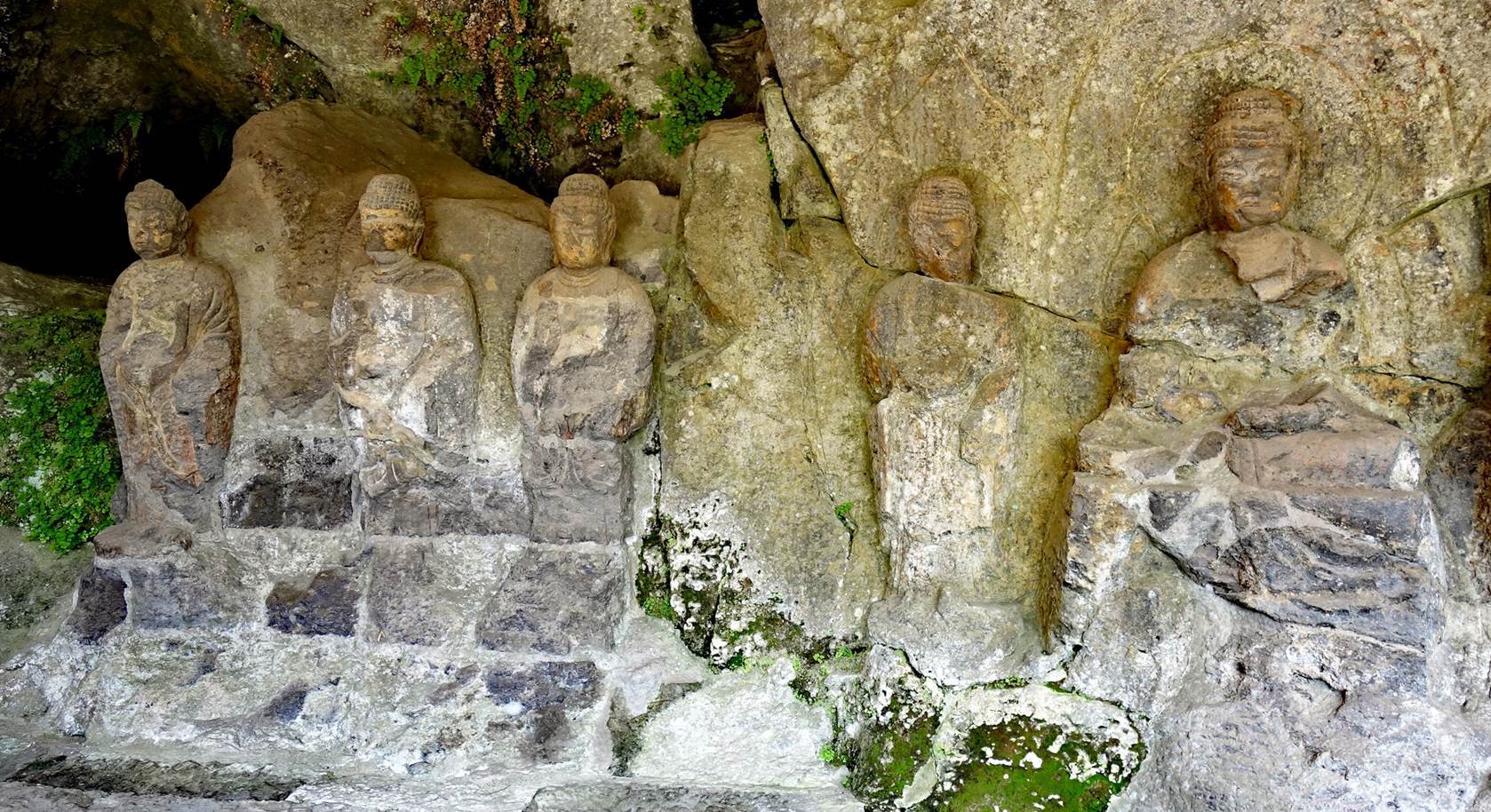
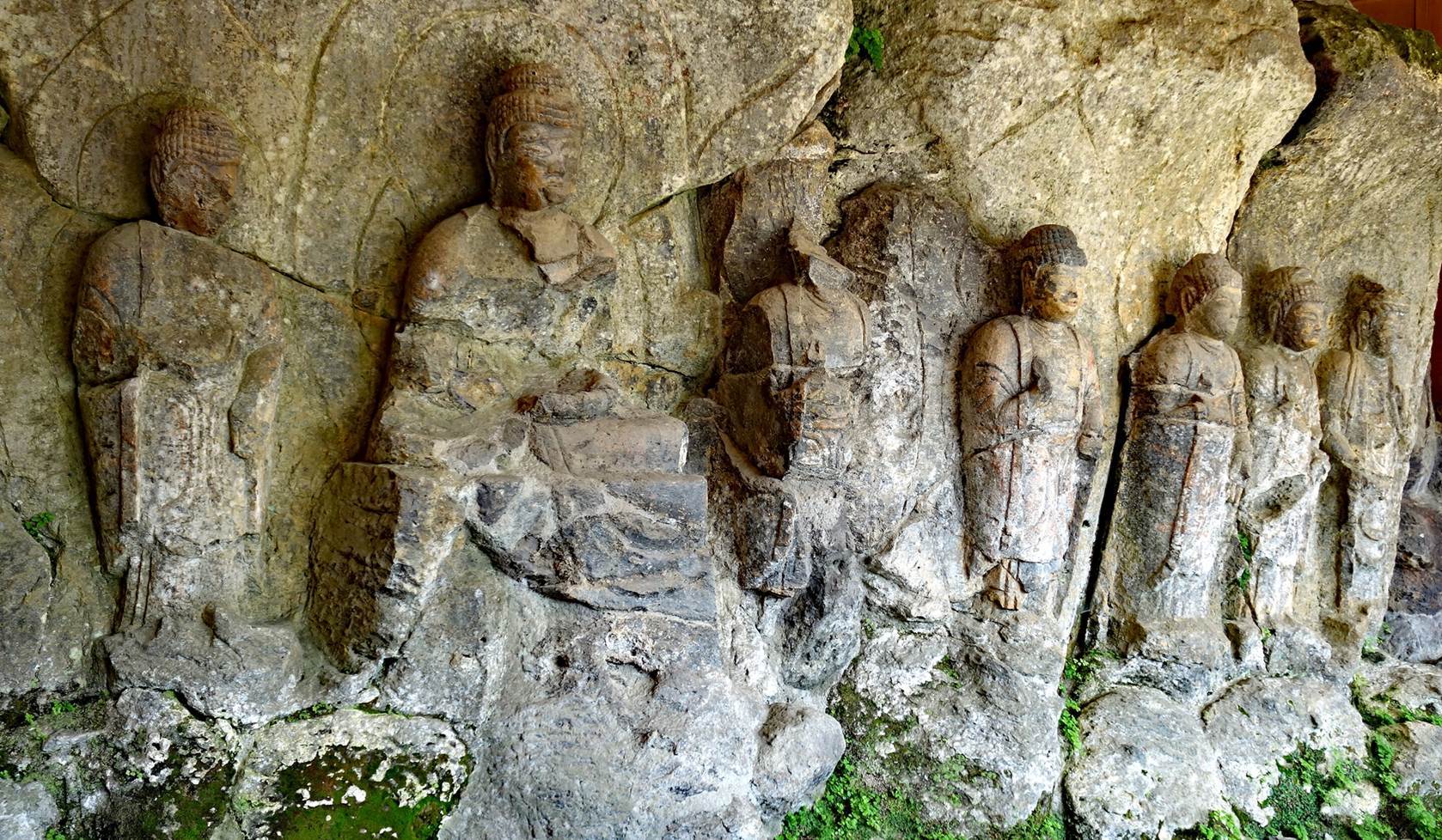
|
|
|
- Hoki 1st cluster, sculpted during the Kamakura period (first photo
below) and the late Heian period (other photos).
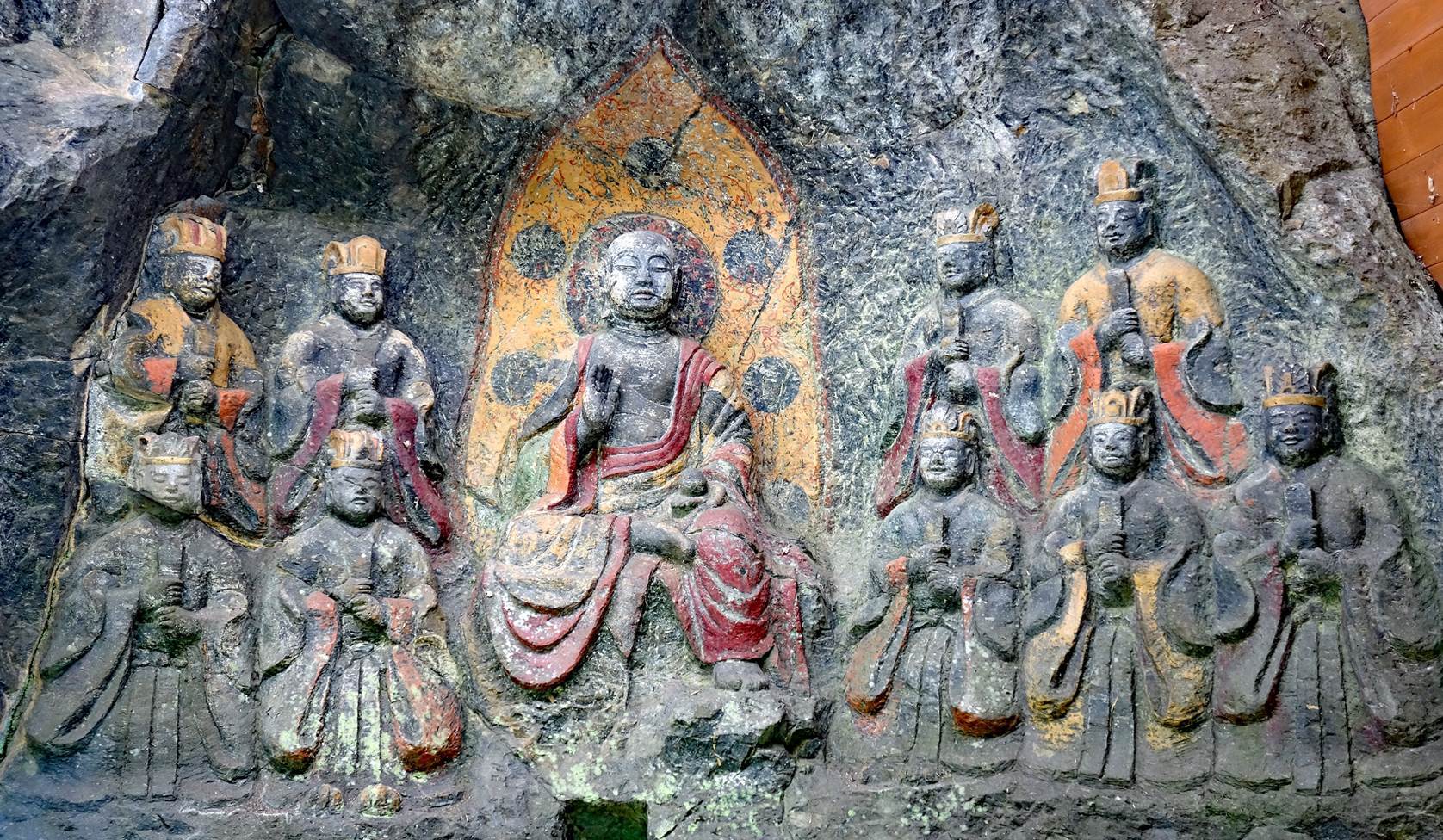
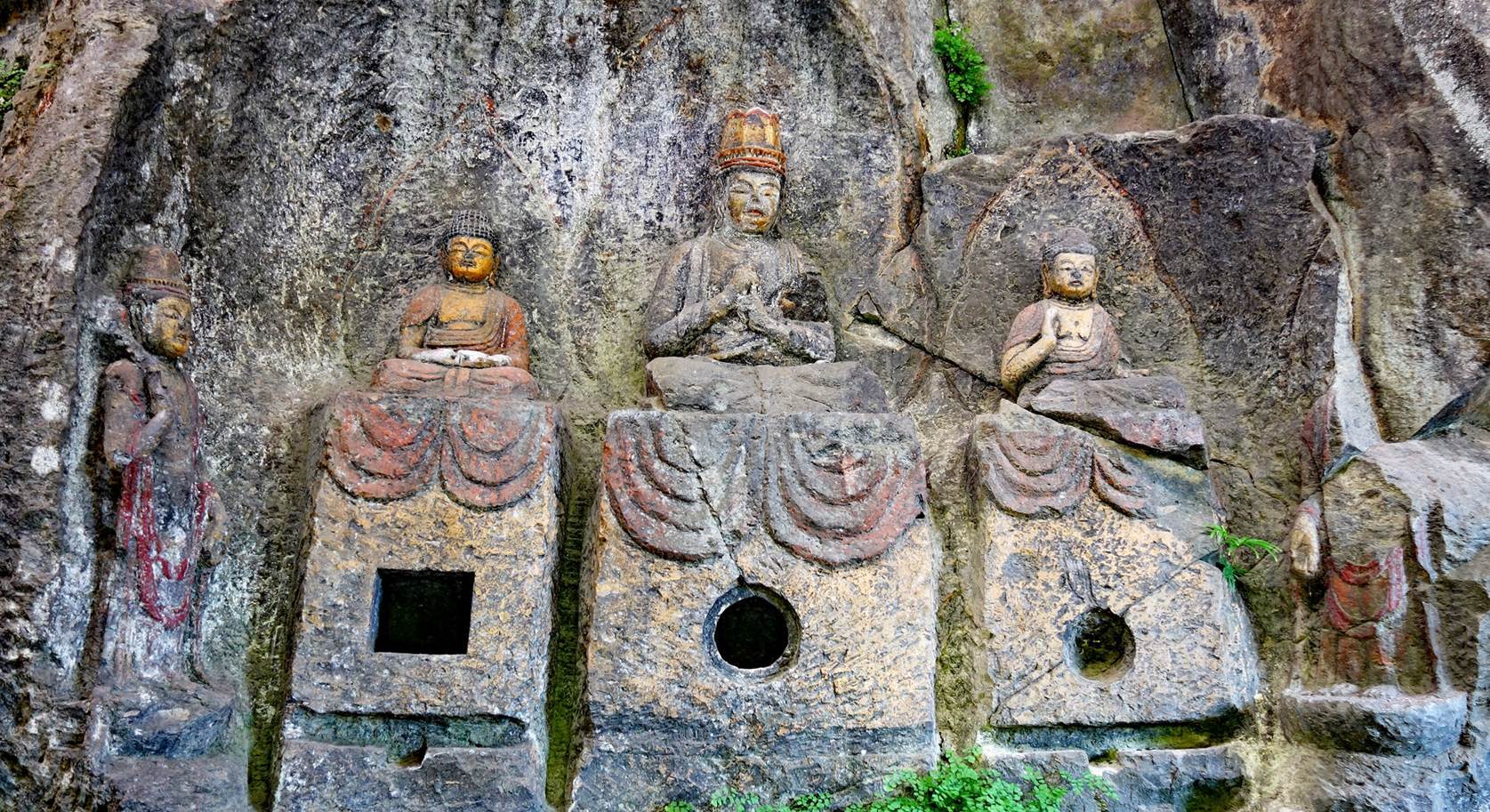
|
|
|
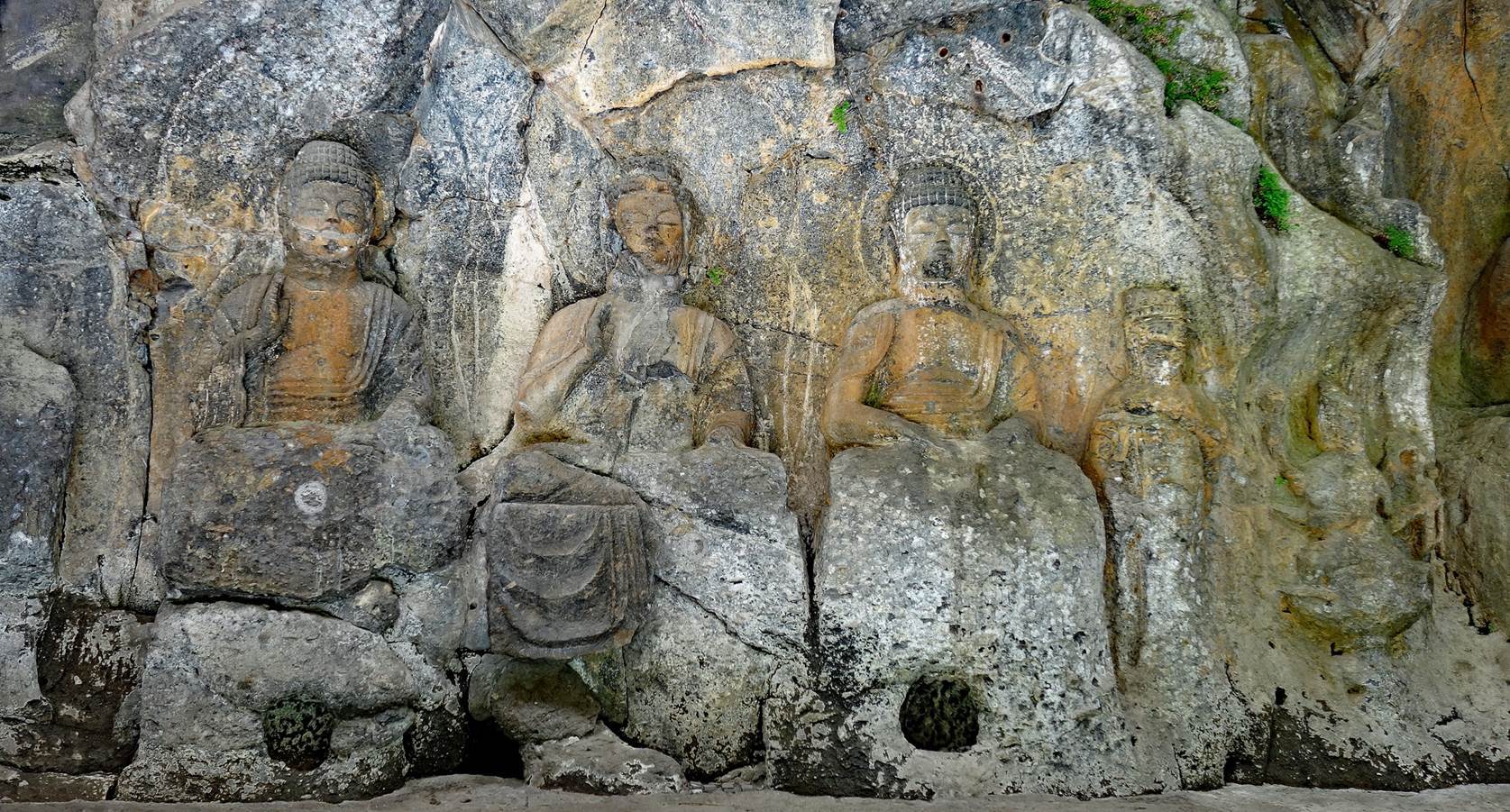
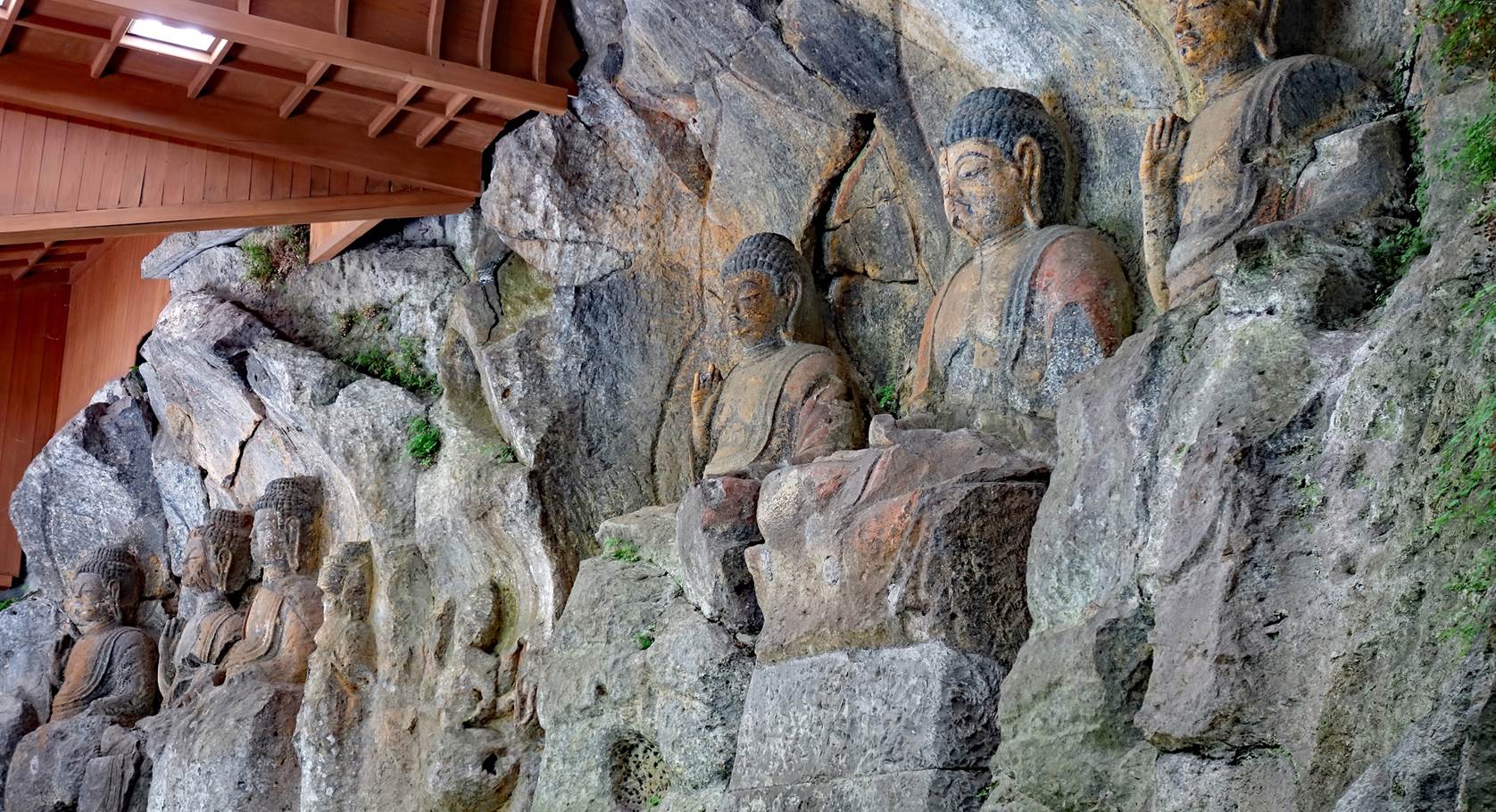
- San-no-san cluster (sculpted during the late Heian period).
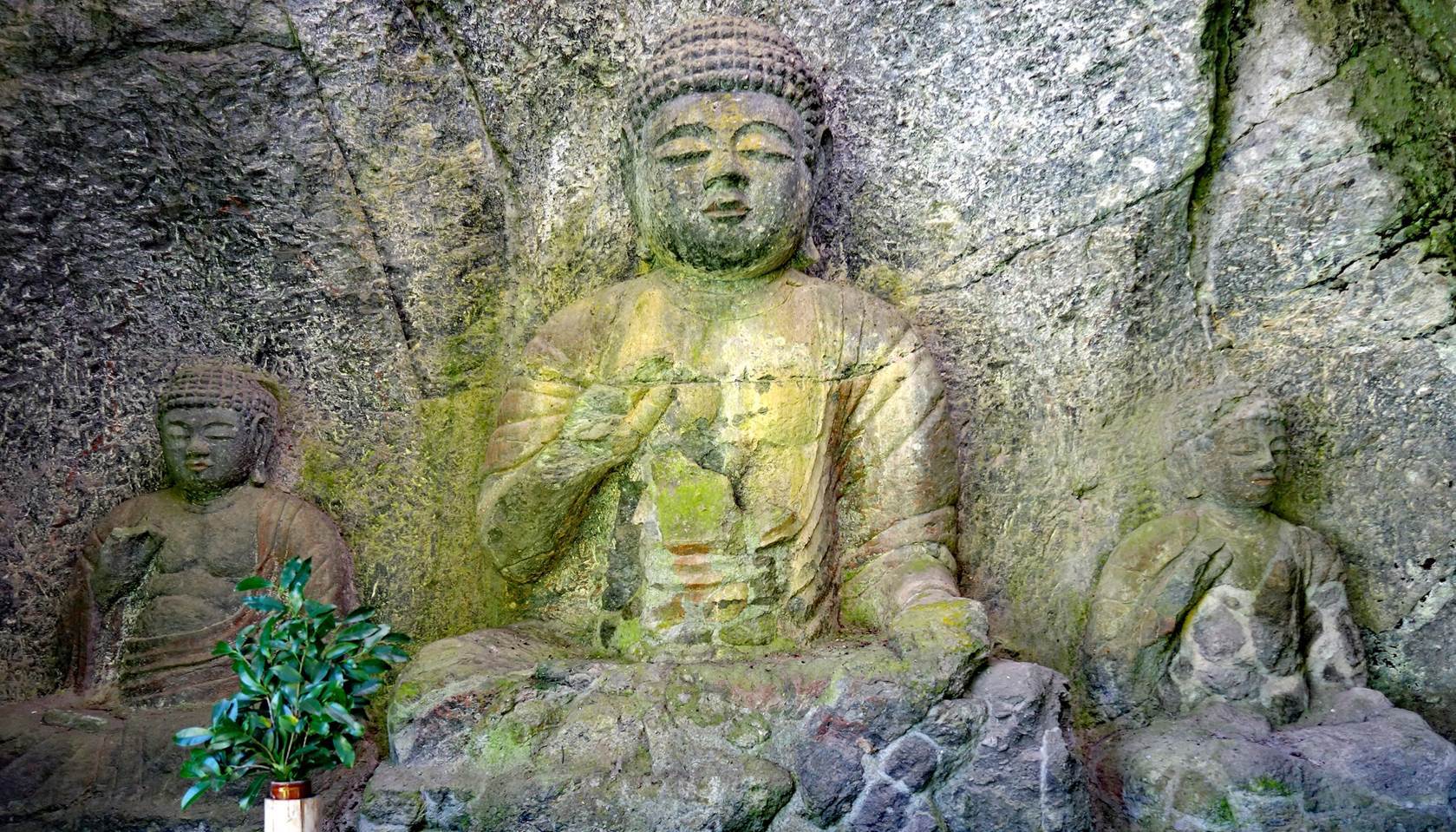
|
|
|
- Furuzono cluster (sculpted during the late Heian period).
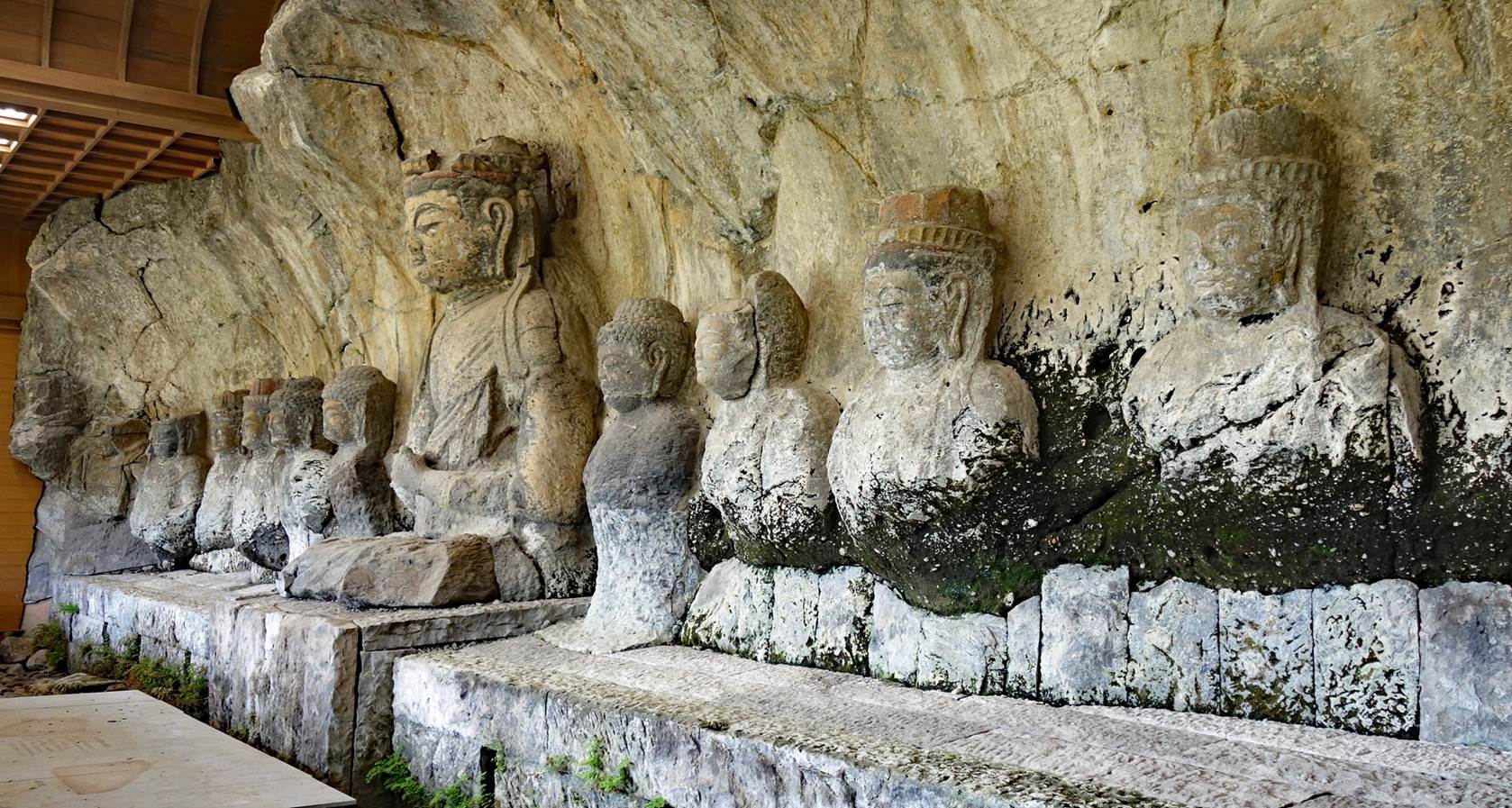
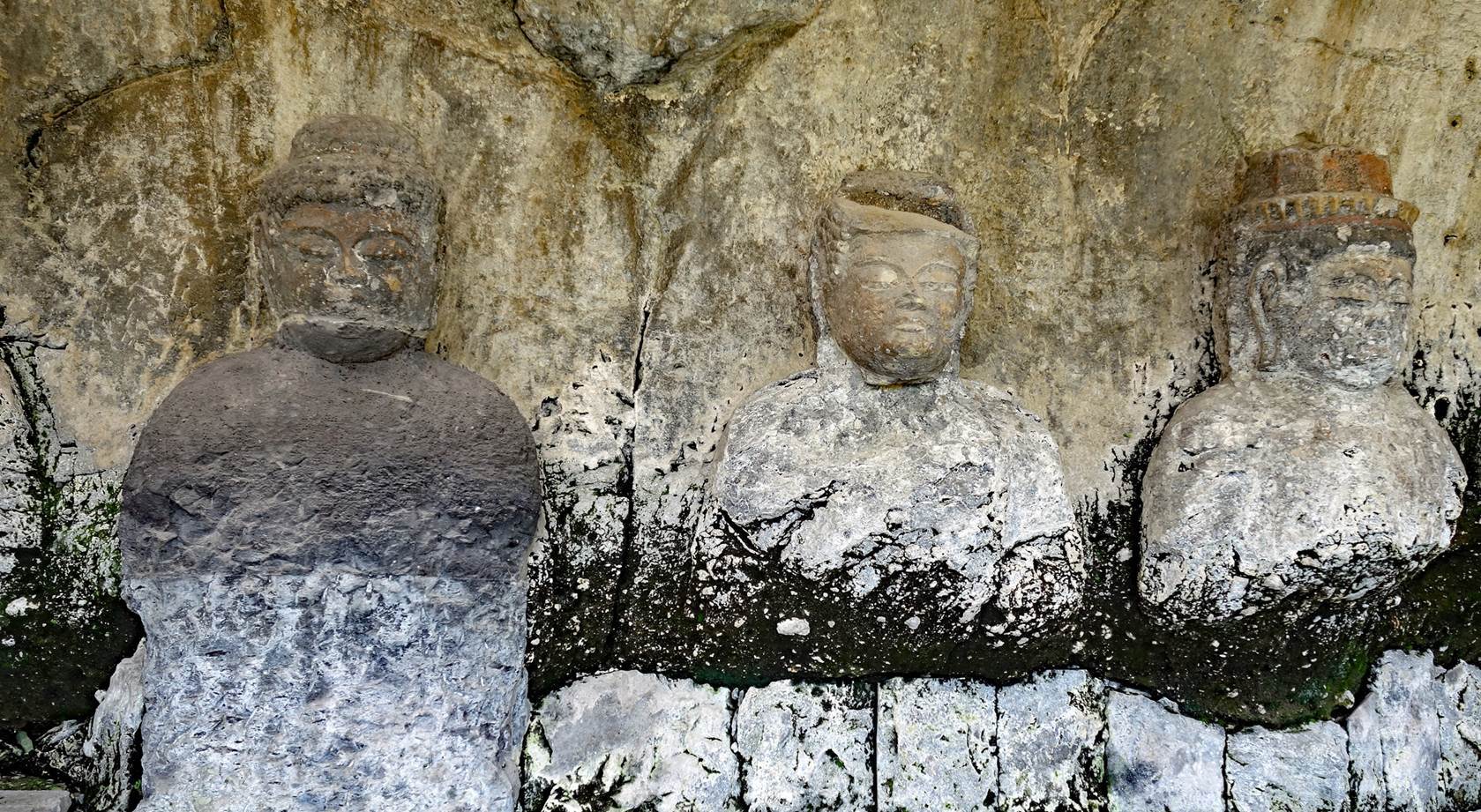
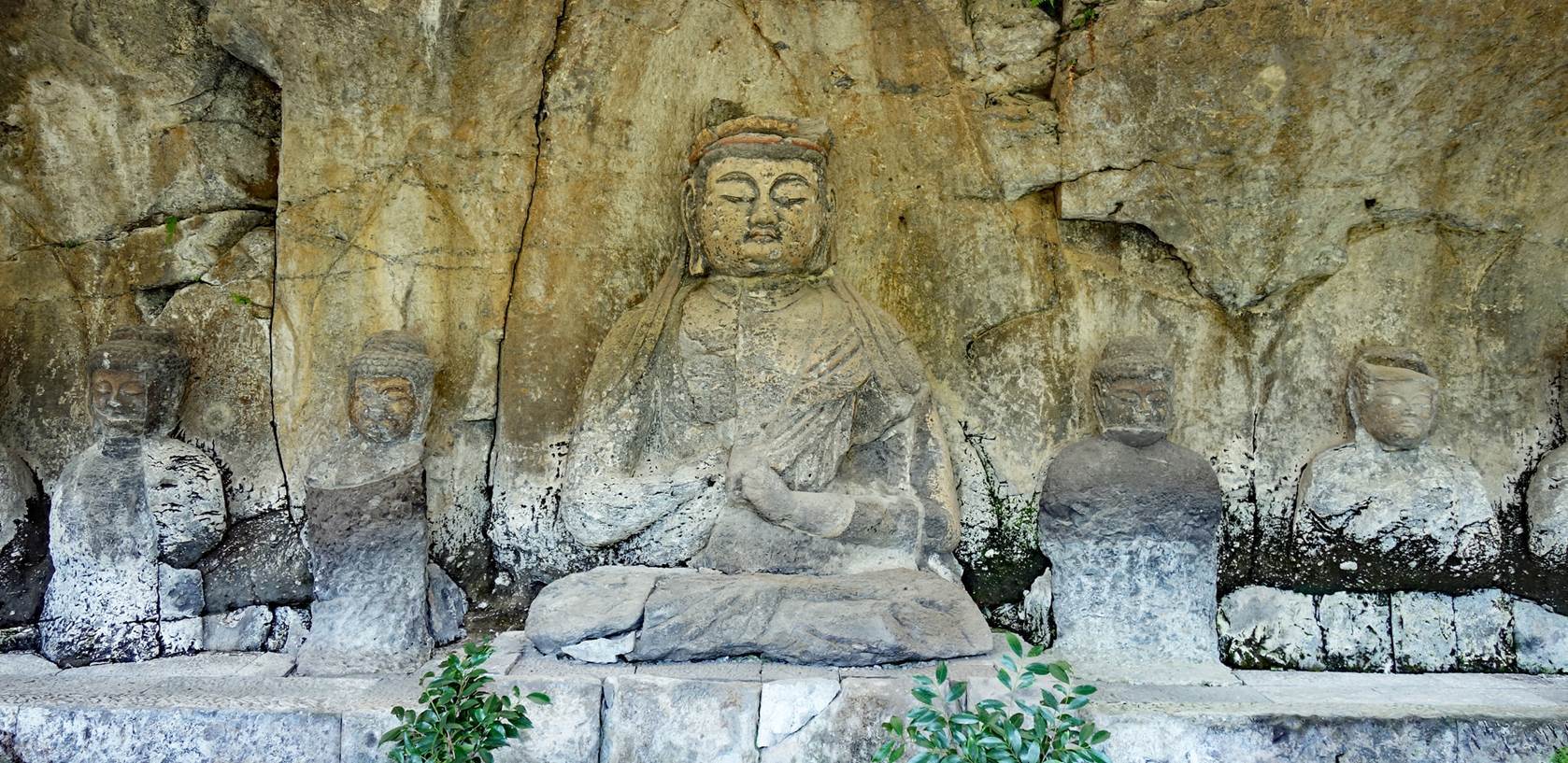
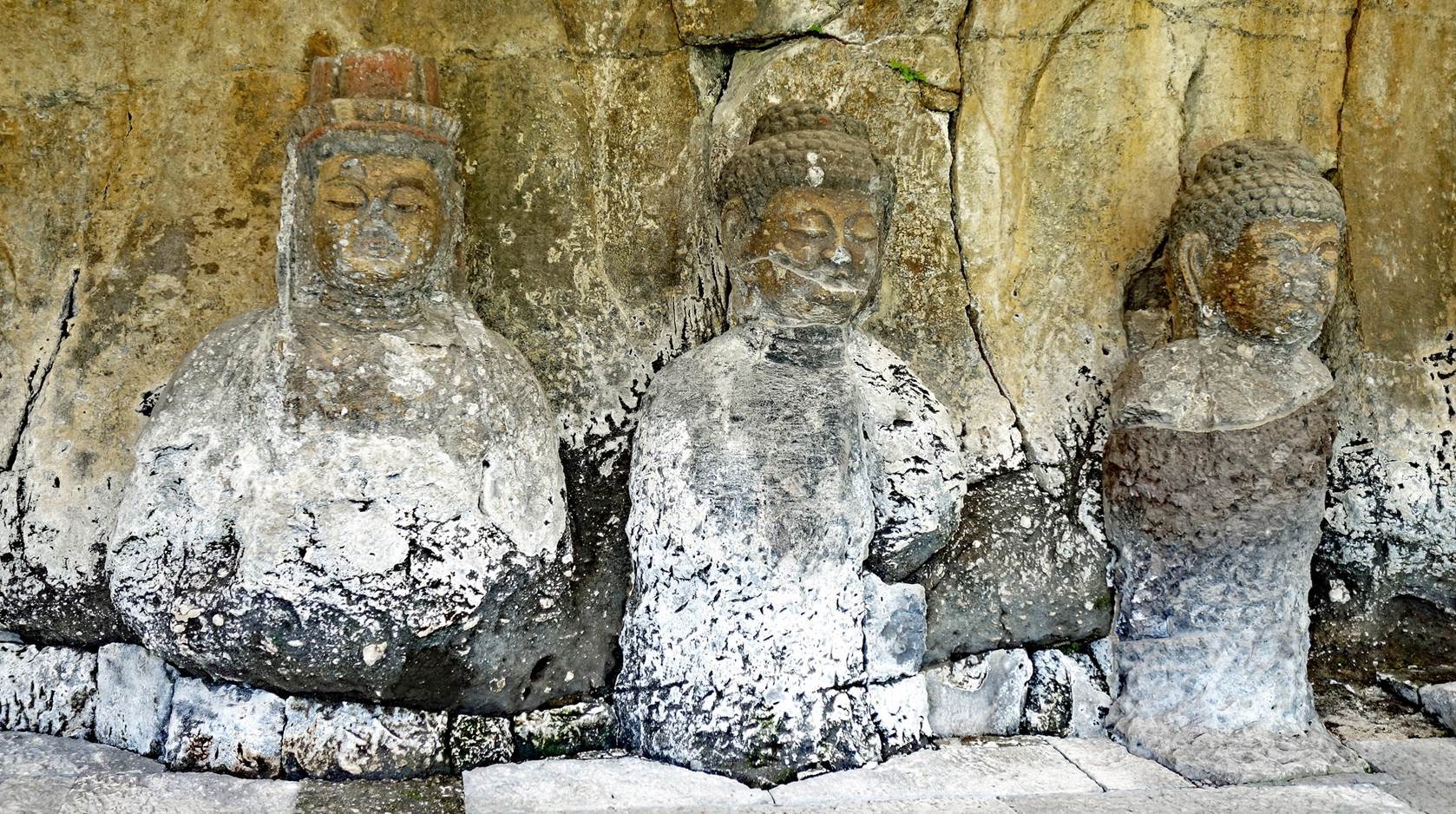
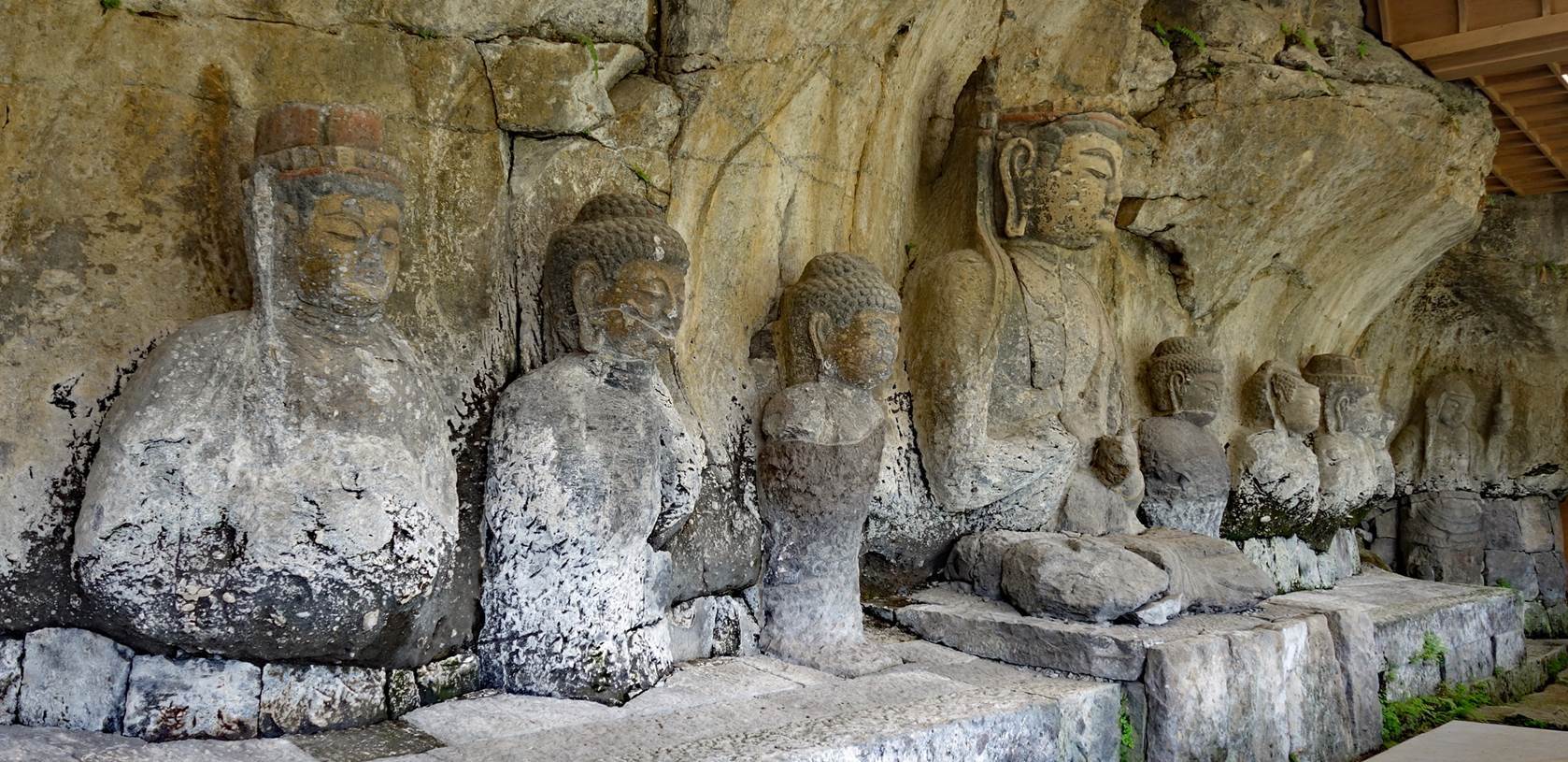
Mangetsu-ji, a Buddhist temple located in the same valley as the above
Buddha sculptures, on its opposite (eastern) side.
- View of the temple with its two old stone statues of Nio guardians
buried up to their knees due to the floods of the nearby river.
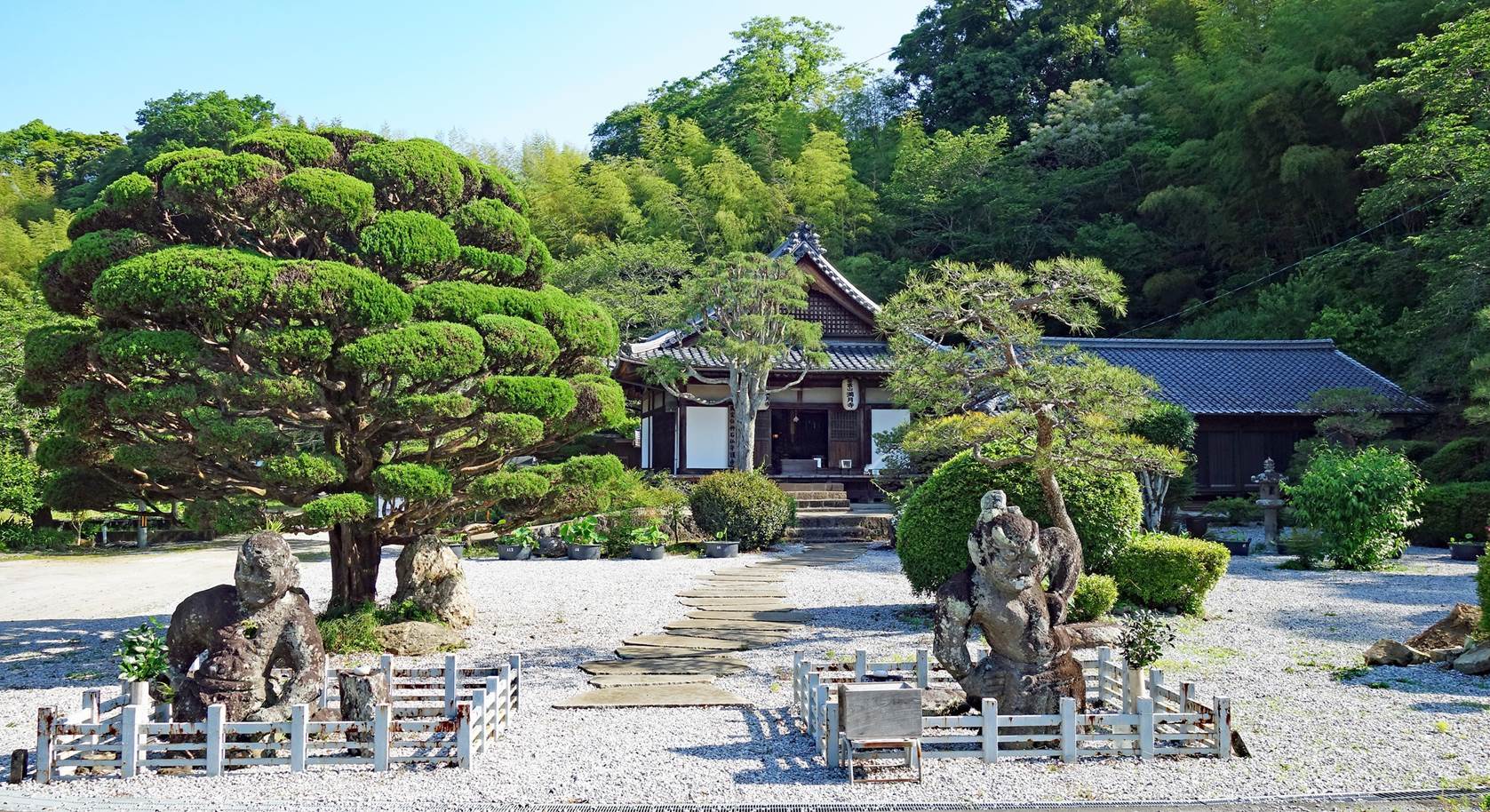
- Left and center: Closeups of the Nio guardians. Right: Stone pagoda on
the temple's ground.
|
|
|
|
- Sculptures on a slope above the temple. Left: Renjo-hoshi, the Buddhist
priest who, according to the legend, carved the Usuki Stone Buddhas. Right:
Manano and his wife, the legendary couple who financed their creation.
|
|
|
- Interior of the temple.
|
|
|
![]()


